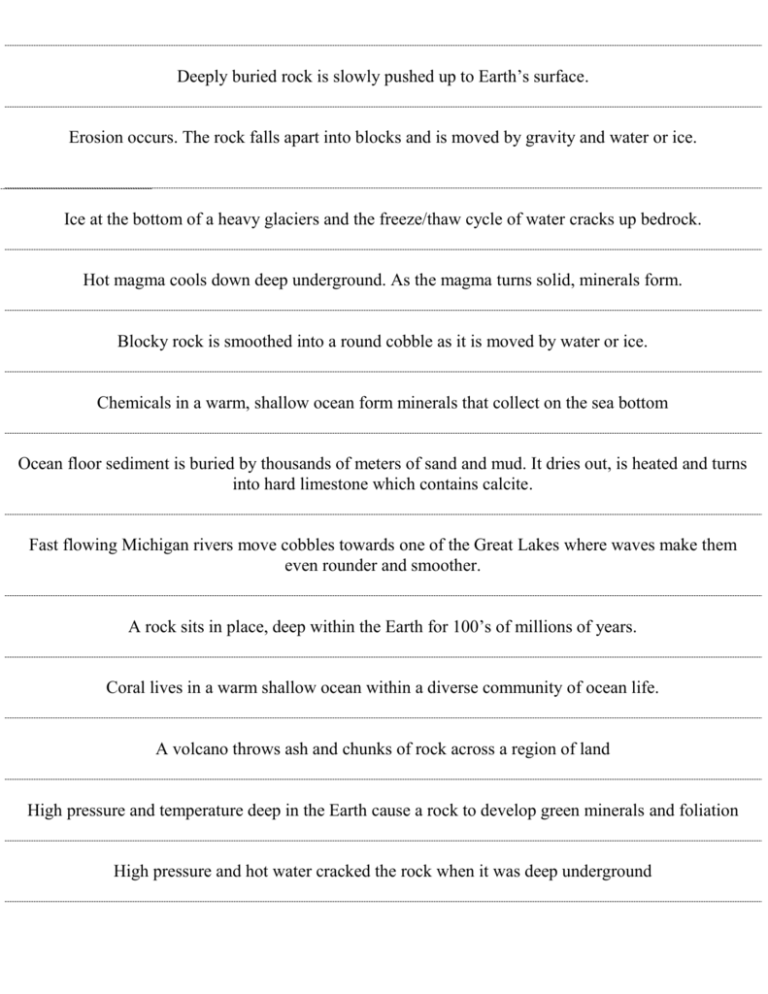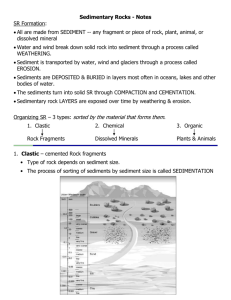Geologic Event Strips.
advertisement

Deeply buried rock is slowly pushed up to Earth’s surface. Erosion occurs. The rock falls apart into blocks and is moved by gravity and water or ice. Ice at the bottom of a heavy glaciers and the freeze/thaw cycle of water cracks up bedrock. Hot magma cools down deep underground. As the magma turns solid, minerals form. Blocky rock is smoothed into a round cobble as it is moved by water or ice. Chemicals in a warm, shallow ocean form minerals that collect on the sea bottom Ocean floor sediment is buried by thousands of meters of sand and mud. It dries out, is heated and turns into hard limestone which contains calcite. Fast flowing Michigan rivers move cobbles towards one of the Great Lakes where waves make them even rounder and smoother. A rock sits in place, deep within the Earth for 100’s of millions of years. Coral lives in a warm shallow ocean within a diverse community of ocean life. A volcano throws ash and chunks of rock across a region of land High pressure and temperature deep in the Earth cause a rock to develop green minerals and foliation High pressure and hot water cracked the rock when it was deep underground Igneous activity dissolves and mobilizes minerals in hot water Sediments are transported by running water and deposited in a new location Sediment has been transported by moving glaciers and deposited as the advance of ice stops eventually melting away Lava is erupted onto Earth’s surface Molten magma cools slowly underground to form solid, coarse grained rock A mountain range developed Deep burial causes the metamorphism of rock, which involves re-crystallization Chemicals are precipitated out of seawater to form minerals Plate collisions caused mountain building Plate collisions caused metamorphism Minerals precipitate out of hot water to form veins of minerals Subduction caused eruption of volcanoes Loose sediment is deeply buried, dried out and turned into solid rock






